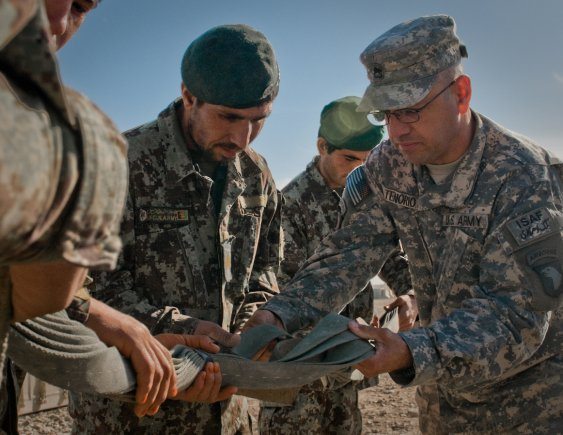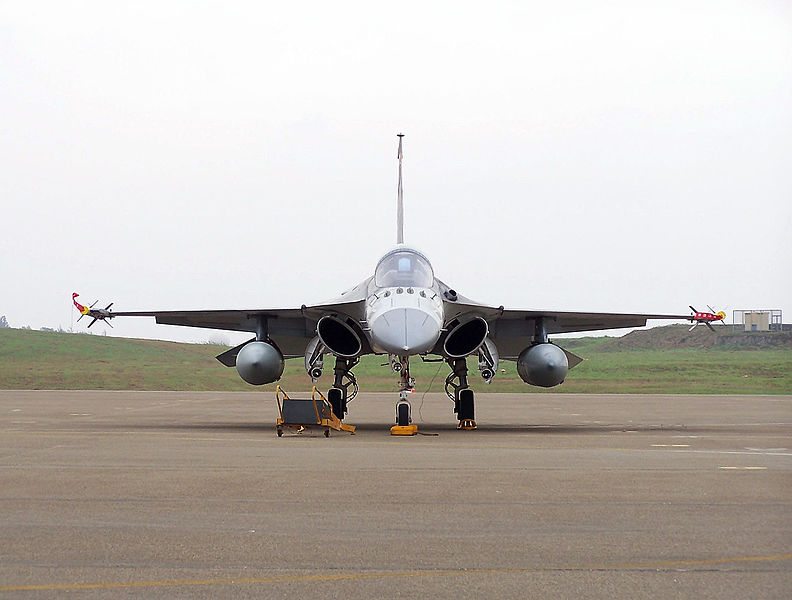The Army doesn’t know for sure what the global environment will look like around 2030, but it’s likely going to have to conduct operations then when called upon to do so.
To prepare for that time, the U.S. Army Training and Doctrine Command conducted a Unified Quest Deep Futures Wargame at Carlisle Barracks, Pa., Sept. 16-20, 2013.
The wargame takes predictions about the future strategic environment, from insights that come from the National Intelligence Council 2030 study and other sources, including the Army’s own studies, and uses that environment as the foundation for two teams to independently wargame the same fictional futures scenario.
While the future strategic environment is something nobody can be 100 percent sure of, the Army’s wargame works on a futures model predicted by using 40 geostrategic, military, science, and technology trends.
Included in futures predictions are the effects of expanding nation states, non-state actors that include groups like Hezbollah and al Qaeda, non-government agencies and even large global corporations. Also included in futures predictions are the effects of climate change, shifting demographics, urbanization, information, and technological trends, said Maj. Gen. Bill Hicks, deputy director, Army Capabilities Integration Center.
“What you see in terms of the environment — because of this interconnection, which is also reflected in the globalized nature of our society and the increasing technological dependence of global society — [are] events unfolding more quickly,” Hicks said. “You see the second- and third-order effects of those events impacting on a wider scale in terms of having a global impact. That drives us to consider how do we influence those events at speed — arrest their acceleration, control those events and try to restore to some degree of stability an area that has gone ’tilt,’ if you will.”
One team involved in the wargame was equipped as today’s Army, as it is programmed to be in 2030. The other team is equipped with “things that are possible but not yet programmed into the Army,” Hicks said.
“One of the outcomes of the more technologically enabled force is that they can respond in the game more rapidly,” Hicks said. “They can cut the time in half, or maybe two-thirds. It allows the political leadership to respond very rapidly to something that is happening very quickly. If the event can be responded to over a longer period of time, what we are really doing is giving the president, the secretary and others more political space to maneuver.”
While the two teams worked through the challenges of a theoretical conflict more than 17 years in the future, and each used a different capability set, they were able to develop insights into how today’s Army can better prepare for an uncertain future.
This wargame, Hicks said, focuses on two operational issues; one of those is the “imperative of speed.” Key findings of the emerging operating environment is the “momentum of human interaction.” Hicks said that includes the information that can be amassed, and the ideas that can be shared by people through the use of technology, as well as the ability to organize and take action.
“That momentum is something we see accelerating into the future, which will compress the decision space of our political leadership, and will drive the imperative for Army forces to be able to respond to it and influence events at the speed at which they occur,” Hicks said. “This creates options both militarily, and, potentially, we should be able to provide more decision space back to our political leadership.”
New operational approaches are also a focus in the wargame, he said, in addition to “revisiting” old ones.
“Non-linear operations, such as what we saw when we conducted Just Cause in Panama, is something we’re looking at,” he said. “How do we do that on a more routine basis against a variety of different challenges?”
The outcome of a wargame such as the one conducted at Carlisle Barracks is the ability to help Army senior leadership of today chart a better course for the Army of tomorrow. Right now, Hicks said, the Army is spinning down from being an operational Army to one that is preparing, or getting ready for the next fight. He said being prepared means being ready for the next fight, and it also means laying the groundwork today that will help an Army in the future be ready to fight.
“There are a couple of things we can impact today that we will see the effects of in 2030 and 2040,” Hicks said. “The senior leaders of the Army in 2030-2040 are in the Army today. So we need to look at what are the implications and the things that we need to start doing today with the officers and non-commissioned officers that we have, to start educating them over time, so they are prepared to deal with that environment.”
Hicks also said the Army can start thinking now about what types of Soldiers it will need to fight in a future environment; what types of Soldiers it will need to recruit today and in the near future, in order to have a capable Army in 2030.
In addition to personnel issues, the Army must also lay the groundwork today to ensure the future Army has the tools and technology it will need. Hicks said that doesn’t necessarily mean buying new equipment today, or spelling out exactly what kinds of weapons are going to be needed. Instead, it means ensuring the Army remains committed to robust science and technology development.
“[It’s] not predicting the systems the future force will need, but looking to make sure we are focusing our science and technology investments today so that in the mid-2020s, those leaders have more options to draw from as they reshape the force for that decade,” Hicks said.
While a “deep futures” wargame can’t truly predict what the strategic environment will look like, Hicks said already the Army is aware of some things it needs to focus on to be more prepared for the uncertainty that is going to come.
“It is to our advantage to be more involved in the international environment, working mil-to-mil relationships, enabling diplomatic, economic and information activities around the world, attracting partners, reassuring allies, creating deterrent structures to maintain a degree of balance strategically, and then through all those activities being postured to respond when that strategic balance is upset,” he said.
The goal of the Unified Quest Deep Futures Wargame, Hicks said, is to “inform decisions today so we can create options for tomorrow.”
The wargame will generate some “insights,” he said, that can be brought to Chief of Staff of the Army Gen. Ray Odierno, to better inform him on decisions he will make now to ensure the Army can be successful in the future.
“What we will be able to do is bring him some insights and help him think about the implications of this deep future, which really isn’t that far away; to inform his thinking on where he needs to make investments,” Hicks said.
Those investments in the future mean the right technology and the right kinds of people, Hicks said.











